It was a busy, working day like any other. By the time I reached mid-afternoon I realised that I’d not eaten lunch, and breakfast had consisted of a couple of strong coffees and a takeaway croissant.
Again. Scouring the office for a snack, I noticed some energy bars. So, I grabbed a couple, encouraged by the fact they had the word ‘healthy’ stamped on the wrapper. That would keep me going till I had time to grab supper. I was in my early fifties, with two primary school-aged children, and permanently exhausted, still suffering from some menopause symptoms in spite of being on HRT – I was unable to sleep, stressed and felt desperately unfit. It never occurred to me that my severely nutrient-deficient diet might be contributing to all this.
Now, a decade later, I am busier than ever but feel great inside and out, compared to the frequent fatigue of my early fifties.
I’m the Government’s Menopause Employment Ambassador, Chair of Menopause Mandate, and about to launch a stage show – Cracking the Menopause – a life dream come true.
But most pertinently perhaps – I am also launching a recipe book, Menolicious, written with Mary Berry’s daughter, the brilliant chef Belles Berry. I say most pertinently because quite honestly I attribute my ability to fire on all cylinders, despite my advancing years (now 62), to the fact that I’ve finally, after decades of poor choices, overhauled my diet.
The realisation that we need grade A fuel to help us motor through midlife and beyond may have come later than I’d hoped but now that it has, there’s no turning back.
Menolicious is a book I wished I’d had during my own perimenopause. Having spent the last decade accumulating knowledge about eating during this liminal stage, I am enthusiastic to share it. Obviously, I’ve always had a vague awareness of the importance of diet but I had no idea how big a part it played in general wellbeing.
When it comes to my weight, historically it’s always been dictated by mood rather than nutritional need.
When happy in my 20s and 30s, I was slender as a reed, feasting on fruit and veg and glowing with health. If I was unhappy – if I had a problem with work – then comfort eating kicked in with me making a beeline for whatever refined carbs filled the void. I’d then find my clothes snugger than they used to be, compounding the misery.

Mariella Frostrup is the Government’s Menopause Employment Ambassador and chair of Menopause Mandate
Recognising the link between food, energy, sleep and mood came in later life when I hit my fifties and my metabolism ground to a halt.
When you are in your menopausal years, you don’t have the indulgence of missing a couple of meals to lose a few pounds. Longer term lifestyle amendments are necessary to deal with the extra padding.
The body is indeed clever. Fat makes oestrogen and, as your ovaries stop making it, the body makes more fat to boost it. Clever, and yet incredibly frustrating. It’s why menopausal women tend to lay down fat around the middle, becoming decidedly more apple-shaped.
You also need the right nutrition to support sleep and strength, as well as the never-more-vital needs for plenty of good quality protein and fibre. Oh yes, and your ability to process sugar diminishes. The midlife female body is complex, but if we tweak what we eat we can work with it to transform it into the powerful engine it can become.
Anyone following the recipes (there are over a 100 to choose from) may well drop a few pounds, but this is not a book that comes with weight loss promises and it’s not worthy either. I am no saint.
As I said rather smugly to a Kit-Kat eating friend the other day, I don’t eat any sweets these days, preferring to treat mid-afternoon energy lows with protein balls, made with dates, coconut, walnuts, ginger etc. These have that all-important sweet taste but release energy slowly, without the bouncing blood sugar levels.
She gave me a Paddington Bear hard stare and reminded me that alcohol, which I do still consume, though in lesser quantities these days, is high in sugar. She’s right, of course, but we all need our treats (and our vices).
That’s why Belles and I have created this dietary reboot.
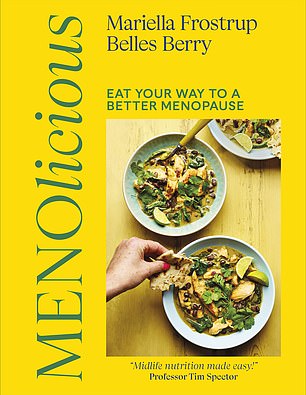
Menolicious: Eat Your Way to a Better Menopause by Mariella Frostrup and Belles Berry. Published by DK RED, 28 August 2025. £22. Preorder now.
There is obviously a focus on ingredients that we specifically need at this time of life, but the recipes are delicious and just as appropriate for your daughters – one friend is methodically working her way through the recipes to give her fast-food loving 16-year-old an education. There are no calorie counts because these are far less relevant than nutritional values such as protein and fibre.
So, the meals are packed with such vital dietary elements as collagen (in salmon, shellfish and leafy greens), fibre – in fruit, veg, legumes, nuts and seeds, the healthy fats we need from olive oil, fatty fish and nuts and seeds… the list goes on.
If you make our kale pancakes or porridge bread for breakfast, I can pretty much guarantee that you won’t be picking at biscuits before lunch. I absolutely love bread, and life would be poorer without it. Ditching supermarket bread over the last couple of years has reduced my midlife bloating, as has upping my fibre consumption; gut motility can be affected by lower oestrogen.
Equally, eating masses of seeds, fruit and veg means that my complexion looks brighter.
That brings me to the most important point. We are not perfect, and nobody can eat healthily the entire time. Life is too busy not to grab the odd takeaway sandwich.
But 90 per cent of our recipes take less than half an hour to make, many far less, and they are remarkably straightforward. And they can be adapted to suit your tastes.
Belles is as scientifically precise as her mother so the recipes are foolproof if you stick to quantities, which is the perfect foil for my ‘why don’t we just….?’ Which for an average cook like me sometimes works, and sometimes fails catastrophically.
The other challenge we set ourselves was to create food that our families would eat.
We didn’t want to be sitting nibbling on undressed lettuce leaves while our kids, partners and friends made merry on mouth-watering feasts, or – worse – end up cooking two or three different options.
So we created meals with fussy teenagers and tired husbands/partners in mind as well. I am delighted to report my husband has embraced many of them to the extent that he is happy to slave over a hot stove making our incredibly easy firecracker sesame beef stir-fry. But only after I’d assured him that he wouldn’t ‘catch menopause’ by cooking them.
There are alcoholic drinks recipes too, if, like me, you can’t bear the thought of being completely teetotal. The bad news is as we head deeper into peri and menopause (and get older!), the body is less able to metabolise alcohol which is, let’s not forget, a toxic substance. It’s now widely suspected (OK, pretty much proven) that there is no safe amount.
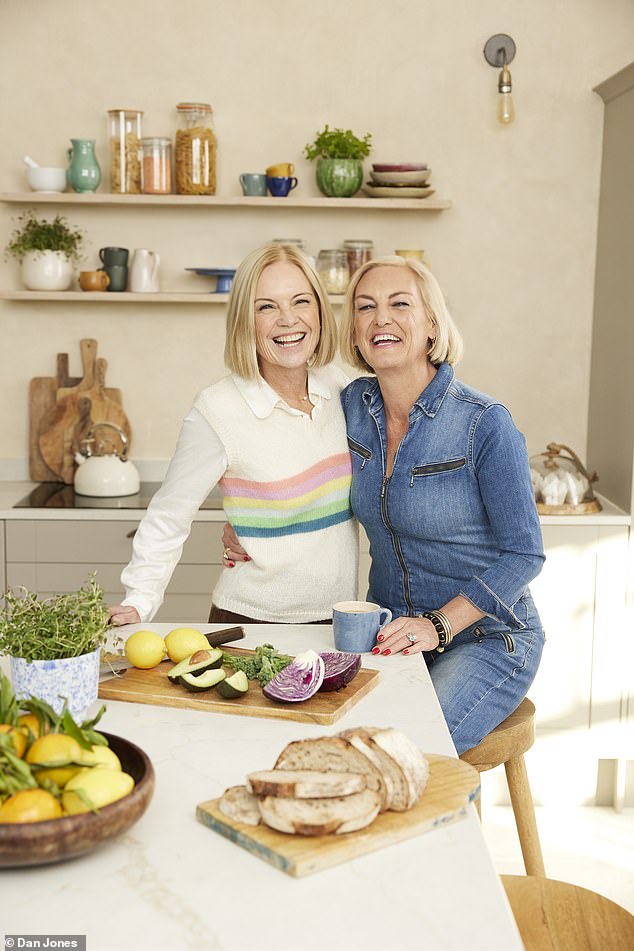
Tuck in to the recipes by Mariella Frostrup and Belles Berry to help ease your menopause symptoms
I still drink though, because I enjoy it. Back in the day, I famously spent three days holed up in a South of France hotel drinking with George Clooney. Now, I am more likely to be found virtuously sipping a delicious Kombucha Paloma, which can be made with or without alcohol. We all come to that sad day when white wine is no longer our friend, and we have to make choices. But that’s what women are so good at – adapting to new circumstances.
I’m so relieved to have belatedly discovered the extraordinary difference that good food can make in easing symptoms, from brain fog, to sleep, to hot flushes. Tuck in and enjoy this latest addition to your menopause toolkit.
Your health-boosting recipes
Breakfast: Kale pancakes
Makes 22, Time: 15-20 minutes
The gluten-free buckwheat is packed with magnesium, something we need to top up on during every stage of menopause. Kale is rich in calcium and antioxidants, supporting bone health and reducing inflammation.
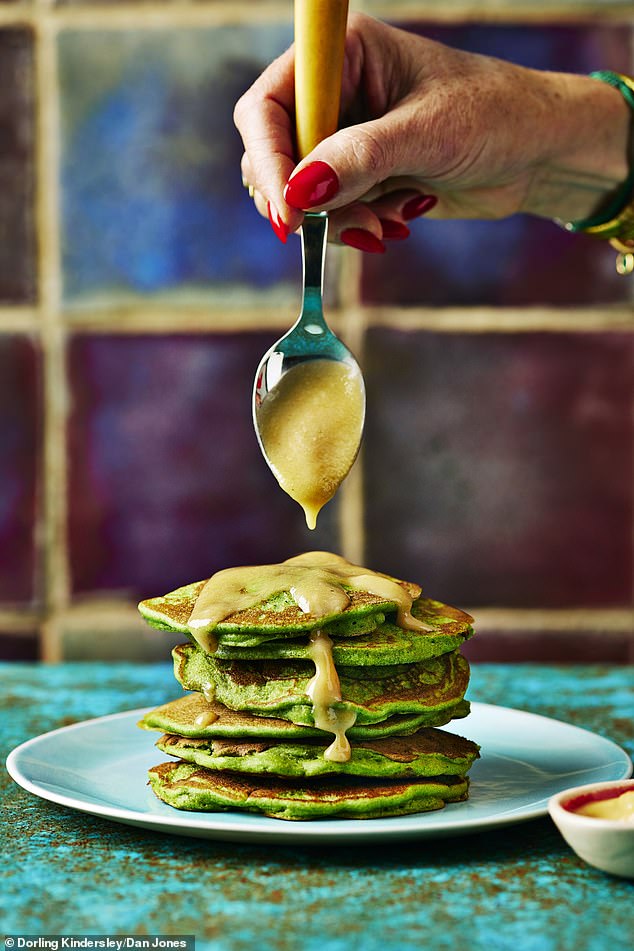
Ingredients
- 75g kale
- 3 eggs
- 150ml milk of choice
- 150g buckwheat flour
- 2 tsp baking powder
- 2 tbsp caster sugar
- ¼ tsp sea salt butter, for frying
- For the tahini butter
- 50g salted butter, softened
- 2 tbsp tahini
- 1 tsp honey
Method
First, make the tahini butter. Mash together the butter, tahini, and honey in a bowl with a fork until well mixed. Pack the mixture into a small ramekin and pop in fridge to chill.
Preheat oven to its lowest temperature.
Slice hard stems away from the kale leaves and put leaves, eggs, milk, flour, baking powder, sugar, and salt into a blender. Blitz until smooth.
Have a tablespoon, spatula, and kitchen paper ready. Heat a knob of butter in a large non-stick frying pan over a medium heat. Use a tablespoon of mixture for each pancake. You should be able to fry four pancakes at a time and they will be about the size of drop scones. Add mixture to the hot pan and fry until bubbles are appearing on the surface, then flip the pancakes over and fry for a further couple of minutes.
Pop cooked pancakes onto a heatproof plate and keep them warm in the oven.
Wipe the pan clean with kitchen paper, add another knob of butter, and continue cooking the pancakes in this way until the mixture is used up.
Serve in stacks with a generous helping of tahini butter on top or on the side.
Lunch: Quick spinach and coconut dal
Serves 4, Time: 25 minutes
Lentils are high in fibre, so are important for all stages of the menopause, as they can help prevent the blood sugar spikes that lead to hunger and food cravings, which can result in weight gain.
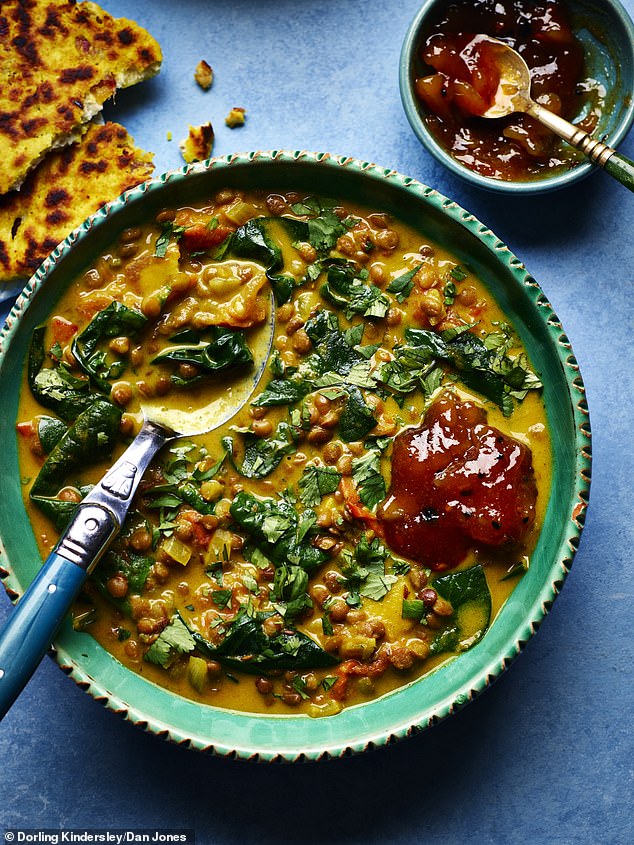
Ingredients
- 3 tbsp olive oil or coconut oil
- 1 tbsp cumin seeds
- 1 brown onion, chopped
- 2 green chillies
- 20g fresh root ginger, peeled and thinly sliced
- 3 garlic cloves, sliced
- 1 cinnamon stick
- 1 tsp ground turmeric
- 1 tsp ground coriander
- 1 tsp garam masala
- 3 large tomatoes, chopped
- 400ml can of coconut milk
- 400g can of green lentils, drained and rinsed
- 150g spinach leaves or seasonal greens
- Juice of ½ lime
- 1 tsp mango chutney (optional)
- Handful of roughly chopped coriander
- Flaky sea salt and freshly ground black pepper
Method
Heat the oil in a large non-stick pan over a medium heat, add the cumin seeds and cook for about 30 seconds, then add the onion, whole chillies, ginger, garlic, and cinnamon stick. Cook for a further 5 minutes.
Add the turmeric, ground coriander, and garam masala and cook for 30 seconds before adding the chopped tomatoes. Cook for another couple of minutes.
Add the coconut milk and lentils, reduce heat, cover and simmer gently for 5 minutes.
Add spinach and cook for a further 2 minutes, then remove from heat. Add lime juice and mango chutney (if using) and season with salt and pepper, to taste.
Remove the green chillies and cinnamon stick, then stir in the fresh coriander and serve with flatbreads.
Dinner: Firecracker sesame beef stir-fry
Serves 4, Time: 25 minutes
Beef is a rich source of heme iron, which is easily absorbed by the body and helps prevent anaemia. Protein is essential for maintaining muscle mass, which can decline during menopause due to hormonal changes.
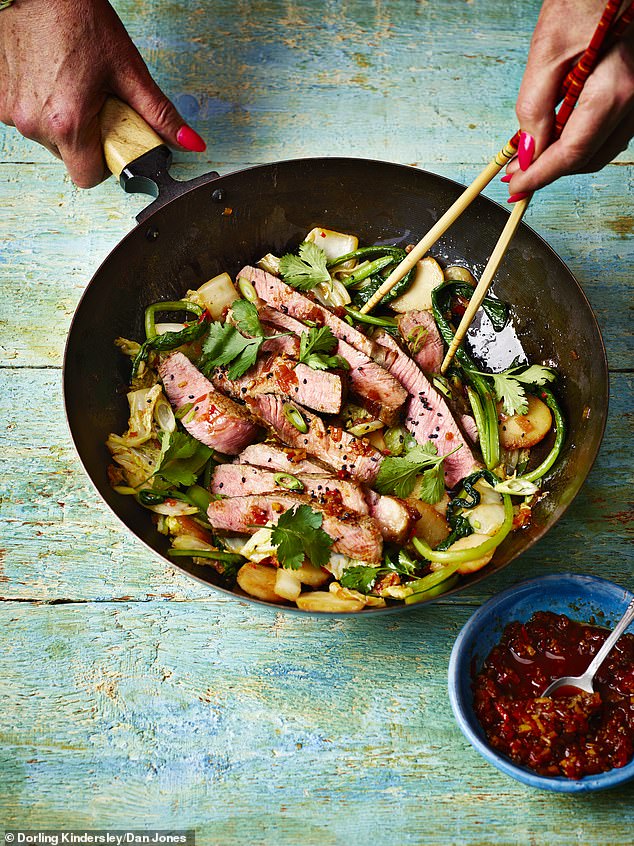
Ingredients
- 1 tbsp sesame oil, plus an extra drizzle
- 2 x 200g sirloin steaks
- 250g choi sum or pak choi, leaves trimmed and chopped
- 1 green pepper, deseeded and sliced into 1cm strips
- 200g Chinese leaf cabbage, roughly chopped
- 225g can of sliced water chestnuts, drained and rinsed
- 4 spring onions, cut into thin strips lengthways
- Handful of coriander
- 1 tbsp black sesame seeds
- Flaky sea salt and freshly ground black pepper
- For the firecracker sauce
- 2 tbsp soy sauce
- 2 tbsp rice vinegar
- 1 tbsp sriracha
- 1 tbsp honey
- 1 banana shallot, finely chopped
- 2cm piece of fresh root ginger, peeled and grated
- 3 garlic cloves, crushed
- 1 red chilli, deseeded and finely chopped
Method
Put the ingredients for the sauce in a small saucepan with 2 tablespoons water and heat gently for about 10 minutes.
Season the steaks with salt and pepper, then heat a drizzle of sesame oil in a wok. Cook the steaks over a high heat for a couple of minutes on each side, turning every minute. Once the steaks are cooked to your liking, place them on a plate and cover.
Wipe the wok clean, then heat the tablespoon of sesame oil over a high heat. Add choi sum or pak choi, green pepper, Chinese leaf cabbage, and water chestnuts. Stir-fry for a couple of minutes, flipping the veg often. Remove from the heat.
Slice the beef in strips, removing any excess fat, then stir them into the vegetables and sprinkle with spring onions, coriander, and sesame seeds. Pour over the sauce (or serve it on the side).
Serve with any grains you like. We like to serve it with brown rice.
Porridge bread
Makes one 900g loaf (14 slices per loaf), Time: Up to one hour
You will need a 900g (2lb) loaf tin for this recipe.
Mariella’s signature, with grateful thanks to her friend Orlagh for sharing her recipe with us. Packed with goodness, ridiculously easy to put together, and failsafe, this loaf will make you so proud when you get it out of the oven.
Seeds, such as pumpkin and chia, are high in omega-3 fatty acids, fibre, and plant sterols, which can help lower cholesterol levels. Walnuts are rich in omega-3, fatty acids and antioxidants, supporting heart health and reducing inflammation.
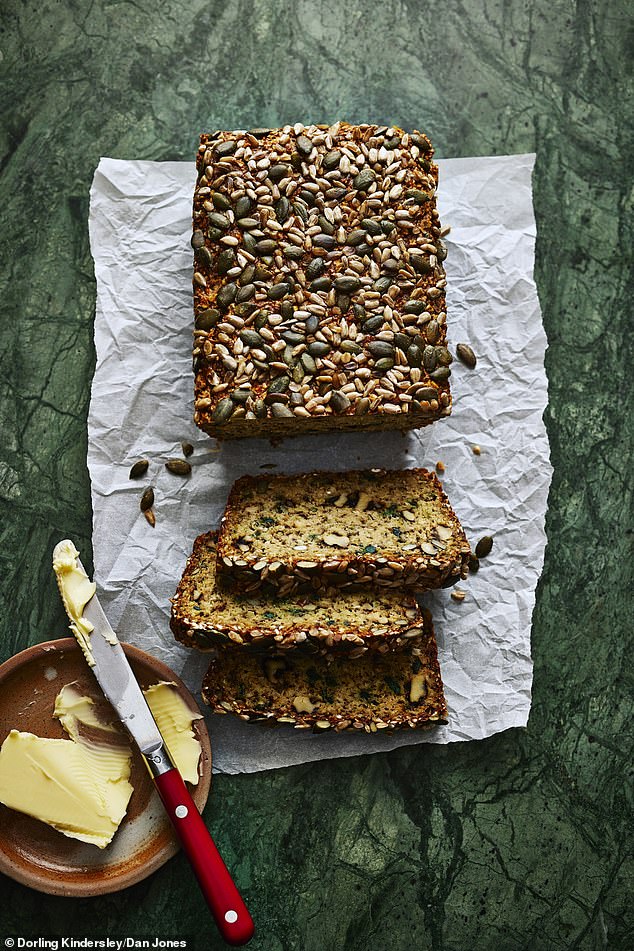
Ingredients
- Sunflower oil, for greasing
- 500g plain yogurt
- 1 egg
- 1 tbsp milk
- 50g walnuts, roughly chopped
- 280g porridge oats
- 2 tsp bicarbonate of soda
- ½ tsp flaky sea salt
- 25g chia seeds
- 30g pumpkin seeds, plus 1 tbsp to sprinkle on top
- 25g sunflower seeds, plus 1 tbsp to sprinkle on top
- 1 tsp poppy seeds, to sprinkle on top
Method
Preheat the oven to 200°C (180°C fan/400°F/Gas 6).
Grease the loaf tin with a little oil and line with non-stick baking parchment.
Place the yogurt, egg, and milk in a large mixing bowl (if using a hand whisk) or the bowl of a food processor. Mix on a medium speed for 10 seconds. Add the chopped walnuts, porridge oats, bicarbonate of soda, salt, chia seeds, pumpkin seeds, and sunflower seeds to the mixture and mix on a medium speed for 25 seconds.
Transfer the batter to the prepared tin, level it out and scatter the extra pumpkin and sunflower seeds and the poppy seeds on top. Bake in the centre of the oven for 45 minutes until golden brown.
Using oven gloves, remove the tin from the oven and carefully turn out the loaf. Put it back in the tin upside down.
Return to the oven and bake for a further 10 minutes.
Remove from the oven and turn the loaf right side up onto a wire rack.
Place a clean tea towel on top until you are ready to serve.
Enjoy warm, with plenty of butter!
Kombucha Paloma
Makes 4 (coupes), Time: 10 minutes
A traditional Paloma with a twist. Kombucha adds a delicious kick to this cocktail, with the added benefit of aiding digestion… pour me another in that case! Kombucha is an ancient, fermented tea that may have many health benefits, including helping to strengthen the immune system and supporting cardiovascular health.
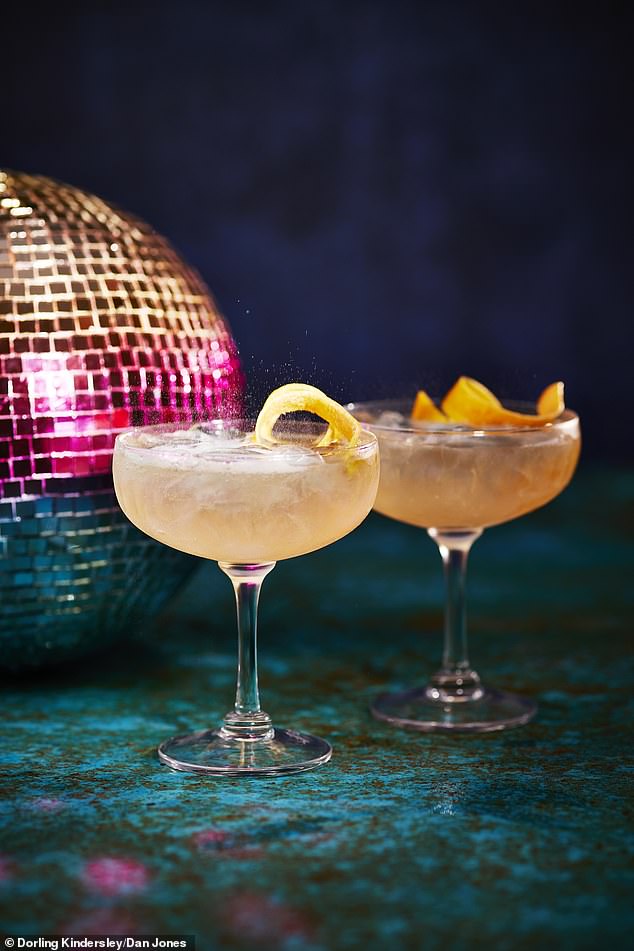
Ingredients
- 120ml tequila
- 150ml pink grapefruit juice
- 2 tbsp lime juice
- 500ml kombucha
- crushed ice, to serve
- 500ml prosecco, to top up
- Pared zest of pink grapefruit, to garnish
- For the pink grapefruit and honey syrup
- 120ml pink grapefruit juice
- 100g light brown sugar
- 2 tbsp honey
Method
First, make the pink grapefruit and honey syrup: In a small saucepan, combine the grapefruit juice, sugar, and honey, and slowly bring to the boil. Reduce the heat and simmer for a couple of minutes until the sugar has completely dissolved.
Pour into a container and place in the freezer for 10 minutes to cool. Set a timer.
In a large glass jug, combine the tequila, grapefruit juice, lime juice, and cooled syrup, stirring well, then add the kombucha and swirl gently, trying to keep some lovely bubbles.
Place some crushed ice in the each glass, then pour in the cocktail and top up with prosecco. Finish with pink grapefruit zest.
- Menolicious: Eat Your Way to a Better Menopause by Mariella Frostrup and Belles Berry. Published by DK RED, 28 August 2025. £22. Preorder now.












